1991-1992 U.S. Gold
Platforms: SEGA Master System + Game Gear, SEGA Mega Drive, Commodore Amiga (Adventure), Atari ST (Adventure), PC (Adventure)
Recently, there has been a call to expand our SEGA Master System entries within the archive. Intrigued by a longstanding mystery, I set out to uncover details that might shed light on the unreleased version of The Godfather for that platform. Additionally, we explore the unreleased Mega Drive edition and the lost adventure games planned for 16-bit home computers of the era.
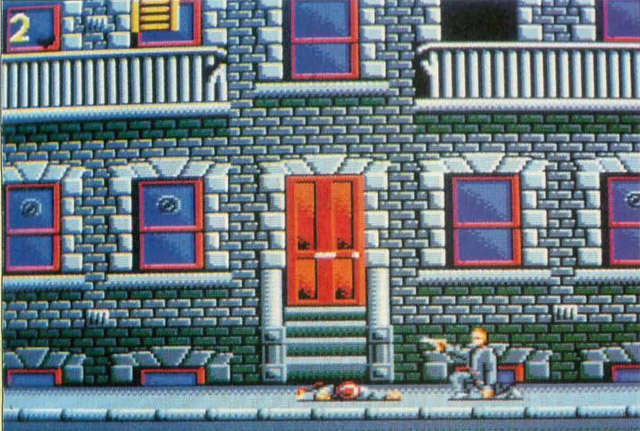
During the production of the third and final film in The Godfather trilogy, U.S. Gold obtained the license to develop a game based on the series. They decided to pursue two separate game developments: an arcade action game and a graphic adventure game, aiming to fully capitalize on the franchise.
Games-X magazine reported in March 1991 that Software Creations would be developing the arcade-style version of the game, with Delphine Software likely working on the graphic adventure (perhaps utilizing their Cruise for a Corpse engine). Commodore Format magazine similarly suggested 8-bit editions were considered – though from previous investigations for the C64 edition there was no evidence of any planned.
Software Creations was mistakenly linked to the game, possibly by someone at U.S. Gold. When we spoke to those from the company, none recalled any plans for a Godfather game. Lorraine Starr, who joined the company later and is a huge fan of the franchise, confirmed she would have known if the team had worked on it. If any work was done, it was brief and likely only at the discussion stage.
For the game design, an episodic approach was taken to try and cover all three films, with a mixture of Robocop and Operation Wolf style levels throughout, and with wonderful artwork by Pete Lyons. Unfortunately the gameplay wasn’t great. with the release getting mixed reviews (Games-X oddly though giving it 5/5).
Returning to the Games-X feature, it was notably mentioned that Creative Materials would be developing the game not only for the SEGA Master System and Game Gear but possibly also for the Mega Drive. ACE magazine also alluded to SEGA platforms (without specifying which ones) and noted that the action game’s design would facilitate easy adaptation across all platforms.
The Adventure edition
The focus was on the 16-bit home computer editions, with SEGA versions to follow soon after. It’s unclear though if a Mega Drive edition of the action game was ever started, as no evidence has surfaced from those questioned. However, Delphine Software did work on a Mega Drive edition that eventually saw release in some form.
Delphine had been reported as given the task of creating the graphic adventure version of the game, though any potential thoughts of just re-using the Cruise for a Corpse engine were discarded. The team looked to go down a different route, and most bizarrely, have a different timeline as well for the storyline.
Paul Cuisset has revealed in several interviews (here is one of them) that U.S. Gold approached Delphine to develop a Godfather game for the SEGA Mega Drive, which would then be adapted for the 16-bit home computers. Instead of a point-and-click adventure, Delphine opted for an arcade adventure style of game, likely due to the initial focus on consoles. The unusual twist came when Paul wanted to set the Godfather storyline in the distant future, and U.S. Gold agreed with the plan.
Initial prototypes were created, and while U.S. Gold liked the early results, they felt it wouldn’t work as a licensed Godfather game. They encouraged Delphine to continue development with their own direction and style, resulting in the now famous Flashback game. We have asked Paul for more details about how the game originally played and if anything has survived, and will report back here if we learn more.
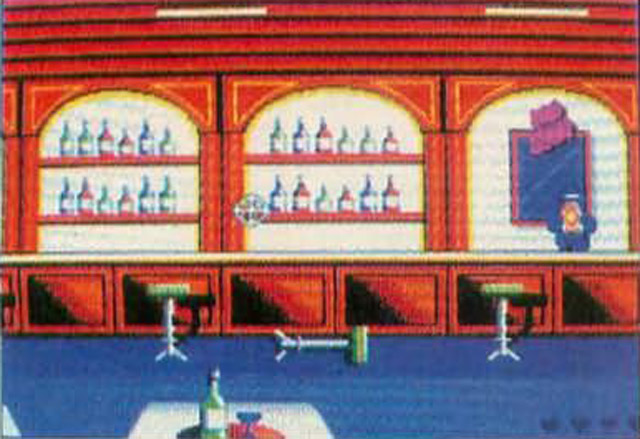
It’s unclear if anyone else was approached for the adventure-style Godfather game or if U.S. Gold dropped the idea entirely after that. No one recalls for certain. The reception and sales of the arcade action game may have discouraged further development, and the opportunity may have also passed too. Future revelations could provide more information.
In December 2024, Hoagie from Abandonware France found reference from graphic artist Thierry Perreau and sound designer Raphaël Gesqua at a conference at the BNF, and at the very end of the video (-1:26), Thierry Perreau says:
Some people of the Paramount wanted us to do ‘The Godfather’ rather than Flashback. We made a nice Corleone with an animated coat, it looked very nice, and when they came back, we told them “OK, we do it, but it will be ‘The Godfather 2093′”, they were like “what?”, and we said “yes, it’s in the future, or we don’t do it”, because doing ‘The Godfather’ wasn’t our thing, the mafiosi stories didn’t interest us a lot, despite the movie being fantastic, we weren’t into it, we were more into space, so we said “if we do it in the future, yes, else we don’t do it”. Today, if someone offers you a license, you can’t answer that, it’s over. If someone comes with ‘Star Wars’, you say “ha yes thank you yes yes yes”, back then you could say “no, sod off, it doesn’t interest us”.
So it seems that the development wasn’t worked on seriously (if really at all) and so the futuristic route was suggested to try and get out of doing a Godfather game and focus on Flashback as a design.
The SEGA 8-bit arcade editions
When it came to the SEGA 8-bit editions from Creative Materials, adverts appeared in the likes of Sega Force magazine in late 1992, but there was no mention of a Game Gear edition. Even Sega Power’s schedule list (with a December 1992 date for the Master System release) had no mention of the platform.
The Master System edition though was never to see the light of day, but in a strange twist – the game was fully reviewed in German magazine “Video Games” in early 1993. It was the only magazine to review the game, but also previewed it a month earlier too. The reviewers were not overly impressed, scoring the game a rather feeble 41% overall, feeling that there was a distinct lack of action or fun gameplay.
Just a few months later, the same magazine then reported that both The Godfather and Strider 2 were to be redeveloped/revised due to a lack of quality. Strider 2 did see release months later, but The Godfather was nowhere to be seen. Either the licence had expired, or U.S. Gold just didn’t feel it was worth saving after the mixed reviews of the other releases.
Disappearing without a trace – the Master System edition has been a mystery for years. In early 2023 VenomRush1997 initiated a discussion about the game and pulled together resources from various magazine scans and posts on SMS Power. Old posts on the site had revealed that rare footage of the game had been shown on Dutch TV show Power Play in January 1993 (which you can see further below).
SMS Power’s Omar Cornut then took the search to Twitter, where we first learned about the search. We shared our findings on the potential Commodore 64 development and contacted Tony Porter, as tester Simon Hadlington had identified Tony as the producer for the game many years ago. While researching Murder! by the same publisher, we had asked Tony about the C64 version, but he didn’t recall anything at the time.
One positive response came from obscure video game enthusiast and archivist Mr. Talida, who confirmed having a disk with a series of Deluxe Paint background art files and posted a photo of it. This photo later proved crucial in our own research, as you’ll see further on. Otherwise, no one recalled much about the game, except for Julian Rignall, who had a vague recollection of seeing it, but nothing more.
Richard Aplin, who worked on the 16-bit editions at Creative Materials, had no idea who was behind the game. This led to speculation that it wasn’t being developed by Creative Materials but possibly Tiertex, who were becoming a prolific Master System developer at the time. However, all leads went cold, and I received no response from Tony either.
GTW’s search attempts in 2024
Building on the earlier efforts of VenomRush1997 and Omar Cornut, I started by reaching out to contacts at Creative Materials, Tiertex, Probe, Images Software, Software Creations, and U.S. Gold. This also involved contacting new connections with ties to these companies from the past.
It became evident from discussions that Probe, Images and Software Creations were not involved in the project. However, the involvement of Tiertex and Creative Materials remained unclear. No one at Tiertex had any knowledge of or involvement in the game, and manager Donald Campbell confirmed they were never offered it or worked on it.
Memories can sometimes blur though, and the game did bear similarities to their Indiana Jones title. So, we reached out to Blue Turtle (aka Leigh Christian and Nick Pavis) and others at Tiertex to confirm their involvement. They all clarified that they were not involved in or aware of the game.
Next, we contacted Andy Hieke, former head of Creative Materials, who indicated they had a code base that could potentially run but did not pursue the Master System at that time. However, as we have said before memories can be unreliable, as Andy does clearly mention SEGA editions in his 1991 Games-X interview. We attempted to reach others such as Nick Vincent for their recollections, but were unsuccessful at the time of writing.
When contacting individuals from U.S. Gold, Danielle Woodyatt had no recollection but suggested Arc Developments or Tiertex, and recommended contacting Steve Fitton, another producer at U.S. Gold at the time. We firstly approached Arc, where Richard Underhill confirmed that they were not involved. We also explored leads with developers and artists from Spidersoft and others connected to the UK Master System scene, all of whom had no information to offer.
After contacting Steve Fitton, prompted by Danielle’s suggestion, he vaguely recalled the game, mentioning it wasn’t well-regarded and that U.S. Gold was transitioning away from the Master System to focus on the Mega Drive. He suggested Tony Porter might have more information and noted that Bob Armour, another producer, was likely at Probe by that time.
Bob Armour later confirmed that it was indeed the same Tony Porter. It was saddening news, as Tony had been a very friendly and valuable resource of information over the years, providing assistance with many inquiries for the site, and he will be greatly missed. Unfortunately, this is a common situation as time goes on with many of those behind the games we grew up with starting to sadly fade away. Deflated by the news, we continued with the rest of our search.
Another person we reached out to was musician Dave Lowe, who had composed music for Creative Materials in the past and also for SEGA Master System games. Dave’s name was unexpectedly credited in the Games-X review for The Godfather – however, on platforms like the Amiga, ST, and PC, the music was credited to Justin Scharvona within the game. When contacted, Dave recalled composing music for The Godfather but couldn’t remember the specific platform.
He mentioned that any SEGA-related music work was typically handled by Martin Walker, with whom he collaborated frequently at that time. However, Martin had no recollection of the game or any music being produced for it. We found this all a bit peculiar with Dave’s name still linked, but set it aside for the moment and persisted in reaching out to anyone else we could in the meantime.
A breakthrough!
Among those still connected to Creative Materials whom we hadn’t yet spoken to were Mike Hutchinson (developer), James McDonald (developer), Andrew McCarthy (artist), and Ralph McCarthy (artist). I had a history of communication with Mike over the years, so I sent him an email to inquire. Unfortunately, I received no response. However, having been in contact with Ralph many years ago, I reached out to him as well and finally had our first major breakthrough!
Ralph responded almost immediately and mentioned that he believed his brother Andrew had worked on The Godfather, though wasn’t sure if it was for SEGA or Amiga. Knowing that Pete Lyons handled the Amiga graphics raised my excitement. When Ralph put us in touch with Andrew, we sent him screenshots – but he couldn’t recall the specific platform of his work.
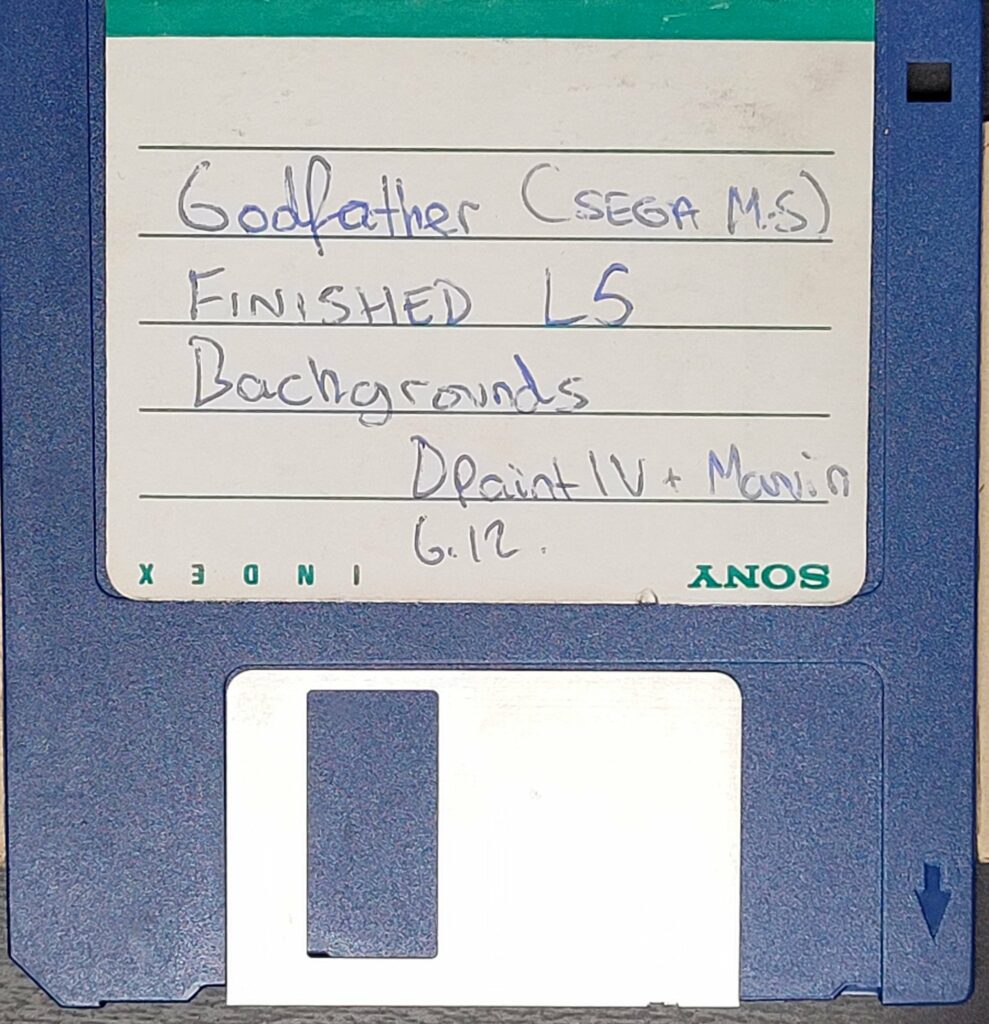
However, Andrew did recognize the graphics and remembered creating numerous yachts and boats for one of the levels. The crucial piece of evidence would turn out to be the graphics disk in Mr. Talida’s possession. When shown a grainy photo, Andrew confirmed that the handwriting on it was definitely his. Andrew McCarthy was indeed one of the graphic artists for the SEGA Master System version of The Godfather. It was a significant breakthrough after navigating through a complex search process.
Interestingly, we had noticed during our research that Mike had received a “Special Thanks” credit in Bram Stoker’s Dracula on the Game Gear, a game that shared some stylistic similarities with The Godfather. The developer, Dominic Wood, had already confirmed not being involved with The Godfather, but we inquired about Mike’s possible contribution. We speculated whether Mike had perhaps shared some of his code base (from the abandoned Godfather game) to aid in Dracula’s development. Suggesting the theory to Ralph, he felt that it may well have been the case. However, Dominic had no recollection of Mike or any involvement from him in the development of Dracula at all.
Until we hear directly from Mike, the identity of the coder remains uncertain too. If it wasn’t Mike, it may have been another contracted individual at Creative Materials whose name we haven’t confirmed or heard from yet. The other potential candidate is James MacDonald, who has worked on numerous Commodore 64 games and was involved with Street Fighter 2 on that platform in 1992.
James was known to Mike, Andrew, and Ralph, making it quite possible that he was involved. GTW had previously communicated with him in the past about his C64 work, but his current email was unresponsive when reaching out again. We’ve since contacted a friend of James to assist in confirming or denying his involvement. We’ll provide an update once we have more information.
Chances of recovery
When considering the likelihood of finding remnants of the game from the group, prospects appear dim. Andrew has nothing left from those days, and it would be miraculous if any disks were to surface. Ralph mentioned a remote possibility of having a shoebox containing his disks somewhere. Mike confirmed long ago that he no longer possesses any of his work from the 1990s, and Dave Lowe indicated that Mike would likely be the only one with a copy of his music work for the game – though this would turn out not quite to be the case!
There is of course the fact that Video Games magazine reviewed the game. Ingo Zaborowski was the reviewer, but sadly it seems that he passed away back in 2015. We have reached out to others from the magazine to try and establish what may have happened to any prototype sent to them. It is extremely likely that anything like this was returned to the publisher – but its worth a try.
There is also the possibility of something surviving from when the game was shown on Dutch TV, where Omar Cornut has contacts who have been in touch with those involved in the show and is awaiting any further findings. Again, they may have returned anything that they were sent.
Coming back to the disks that Mr. Talida obtained, it’s intriguing to note their origin. Mr. Talida revealed they came from none other than Dave Lowe himself. Dave had sold a bundle of disks to Mr. Talida back in 2022, which included two disks related to The Godfather. It appears Dave inadvertently picked up the graphics disk while working with Andrew McCarthy and the team. The other disk seems to contain PC MIDI tunes that Dave likely composed, and could confirm that his only involvement was on the PC edition.
Mr. Talida sadly confirmed that there was nothing related to the Master System game on the graphics disk, suggesting it may have been overwritten by other files. He has been preserving all the disks in the set he acquired and is releasing them here. In January 2025, he preserved the disks which you can see here: https://archive.org/details/@dave_lowe_disk_archive?query=godfather
The PC disk has MIDI files and driver code, and what seems to be PDS files that have come from Game Gear development. Sadly it seems the SMS disk with backgrounds has been completely overwritten – but perhaps someone might be able to recover data from the raw files?
The Game Gear files bit is interesting though – could this suggest that a Game Gear port was being considered or even under way? We won’t add as a platform to this page just yet, but it is currently now food for thought.
Another detail we’ve uncovered is that the artwork disk disclosed the package that was used to create all of the maps for the Master System edition. Ralph identified “Marvin” written on the disk as a map editor/assembler developed by Mike on the Amiga platform. It was named after Marvin, a favourite character from The Hitchhiker’s Guide radio plays that they often listened to in the office.
So, as you can see, there’s still more work ahead, especially in confirming the identity of the Master System developer. While finding a fully working prototype or complete game may prove challenging and require a stroke of luck—the information now uncovered may hopefully lead to more very soon. Identifying the artist and likely musician provides a strong foundation to build upon. With determination and continued effort, we’re optimistic more about this intriguing piece of gaming history can be uncovered some day.
With thanks to Stephen Stuttard and Archive.org for various scans, Mr Talida for information about the disks, preserving them and kindly sharing photos of two of them, Dave Lowe, Andrew McCarthy and Ralph McCarthy for all their help, Hoagie from Abandonware France for input about the abandoned Delphine game, Kjell for the original video, VenomRush1997 and Omar Cornut for their initial searches, Ross Sillifant and Archive.org for additional scans and to the many many people from Probe/Tiertex/Creative Materials/Images Software/Software Creations and U.S. Gold who answered our queries and questions whilst doing research over the past few months.
Dedicated to U.S. Gold’s Tony Porter, who sadly passed away in 2019.
Downloads
- Godfather disks from David Lowe (Mirrored from archive.org and courtesy of Mr Talida)
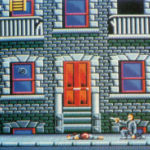
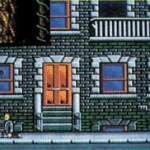



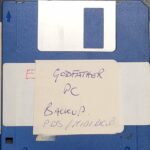



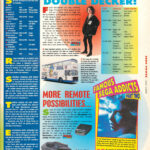








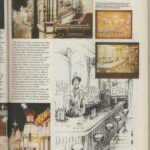
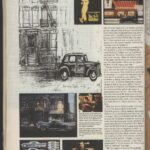



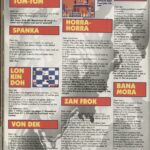





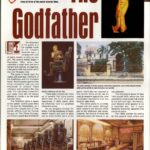
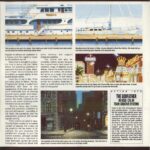
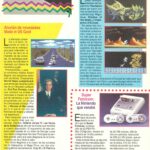
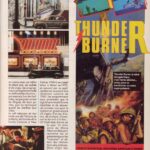
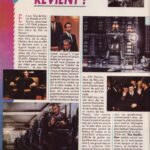

It seems that Delphine Software never worked seriously on this one. Last year, Thierry Perreau (graphic artist) and Raphaël Gesqua (sound designer) spoke at a conference at the BNF, and at the very end of the video (-1:26), Thierry Perreau says:
Some people of the Paramount wanted us to do ‘The Godfather’ rather than Flashback. We made a nice Corleone with an animated coat, it looked very nice, and when they came back, we told them “OK, we do it, but it will be ‘The Godfather 2093′”, they were like “what?”, and we said “yes, it’s in the future, or we don’t do it”, because doing ‘The Godfather’ wasn’t our thing, the mafiosi stories didn’t interest us a lot, despite the movie being fantastic, we weren’t into it, we were more into space, so we said “if we do it in the future, yes, else we don’t do it”. Today, if someone offers you a license, you can’t answer that, it’s over. If someone comes with ‘Star Wars’, you say “ha yes thank you yes yes yes”, back then you could say “no, sod off, it doesn’t interest us”.
https://www.bnf.fr/fr/mediatheque/pionniers-du-jeu-video-laventure-du-studio-delphine-software
Ah, that makes sense as to why they’d suggest such a strange change to the storyline to try and get out of it. Thank you Hoagie – i’ll add that to the page now.
Have you tried contacting Matt Furniss to see if he did the music? The music in the video kind of sounds like his style in other master system games he worked on, but I could be wrong.
Yeah, I attempted to get hold of Matt to check – but didn’t get a response. I’ll try again!
I hope we will be able to piece the rest together. I tried reaching out to Justin Scharvona to no avail. Currently, I am archiving the different themes he (as per the game’s credits) composed for the MS-DOS, Atari and Amiga versions via emulator. Something doesn’t quite add up with the lemonamiga and atarilegend listings. He also posted another version of the main theme to his personal website somewhat recently. Due to the different hardware, the three home release versions have interesting variations. The MS-DOS even lets me set the sound option to a “beeper”, so that’s five versions of the opening track thus far.
Thank you for the awesome research,
Nik
Thanks Nik!
Once the disks are preserved by Mr Talida, there is a PC formatted one which has come from Dave Lowe, so that will be interesting to check out. It isn’t certain if this will be his work, or tracks from Justin that were sent to him.
Frank, I just saw the update. Are you finding anything related to the music; The main theme in particular? I got all other versions together, I think I’m at 8 different ones now. I couldn’t make use of the files from David, though maybe some day in the future someone can! I spent over 4 months decrypting, extracting and editing the score of the 2006 Godfather game, I have just had it with various emulators and programs for now…
Nik
Hi Nik – unfortunately we’ve found nothing of the game or the music on any format – there are only the files that Mr Talida recovered from Dave’s disks at the moment. I would check our Mr Talida’s archive, as there might be other unlabelled disks there which had Godfather related music on (I had gone through them all, but can’t recall seeing anything else).
Fantastic and informative article !
I’m really happy your looking to increase the quantity of entries for the Sega Master System.
I was speaking to Clive Townsend several years ago and he is adamant that he completed a version of the legendary and infamous Rise of the Robots for the MS.
He did in fact co create the Game Gear version and he did say the MS version would have been very similar…
He says he does not have a copy though…it would be very cool if it ever turned up :)
Thanks Glenn! Ah that would be amazing to try and find. I’ll reach out to Clive about this one.